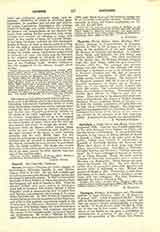

Casson, FRANCOIS DOLLIER DE, fourth superior of Saint-Sulpice, Montreal, Canada, b. near Nantes, France, 1636; d. in 1701. He was first a soldier and served as a captain under Marshal Turenne, his bravery eliciting this general’s esteem. In 1657 he entered the Seminary of Saint-Sulpice, at Paris, was admitted into the Company, and went to Canada in 1666. There he devoted himself with great ador to missionary work and, in company with Father Galinee, a fellow Sulpician, made a reconnoitring tour of Lakes Erie and Ontario; unfortunately, his account of the expedition has been lost. In 1671 Father de Casson succeeded Father de Queylus as superior of the Sulpicians, and while in this position contributed largely to the development of Villemarie (Montreal), planned the laying out of its streets, began the canal known since by the name of Lachine, and, moreover, stimulated the energy of the colonists under trying and hazardous circumstances. He wrote a “Histoire du Mont-real” (Memoires de la societe historique de Montreal, 1869), and “Recit de ce qui s’est passe au voyage que M. de Courcelles a fait au lac Ontario” (Bibliotheque nationale de Paris, old French supplement, no. 13, 516, 516, fol. 207-218).
A. FOURNET

